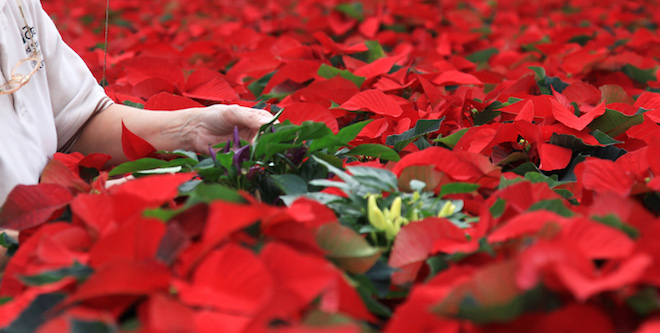

Apr 6, 2020Q&A with MSU greenhouse educator Heidi Lindberg
Beneficial insects and other biocontrols are often more effective in controlled environment agriculture than in open fields.
In addition to beneficial insects, some greenhouse growers introduce beneficial non-crop plants, called “bankers.” And in some cases, the non-crop plants and insects can even work together for better results.
To lend some insight into these practices, Vegetable Growers News reached out to Heidi Lindberg, a greenhouse and nursery Extension educator at Michigan State University.
Vegetable Growers News: A lot of times when I think about “biocontrols,” I think about new organic sprays, or beneficial insects you can order. Would you consider non-crop plants to be a form of biocontrol?


VGN: I’ve heard a lot about the “sentry” plants, “bankers” and “trap” plants. What do these different terms mean? What are some of the different purposes of non-crop plants?
HL: The terminology used around banker plants can be confusing. Banker plants are those non-crop plants grown among the crop that provide natural enemies with an alternative food source. For example, an oat/wheat banker plant system is used to rear Aphidius colemani, which is a type of parasitic wasp that parasitizes aphids. On the non-crop plant, the oat or wheat plant in this case, lives thousands of bird cherry oat aphids. These aphids will only live on monocot crops (the grasses) and won’t spread to the greenhouse crop. The parasitic wasps will use these bird cherry oat aphids as an alternative food source when the aphids among the crop of interest are reduced. This helps to stabilize the population of natural enemies in
the greenhouse.
Trap plants are a little bit different: they are non-crop plants that are used to “lure” the pest insects off of the crop. These crops are particularly tasty to the pest insects. The grower then removes these plants from the production area as a way to “trap” the bad insects and remove them from the crop.
VGN: How widespread is this practice, among commercial growers? Among gardeners?
HL: Biological control has been growing in popularity in commercial greenhouse production systems due to the goal of reducing pesticide residues, matching consumer demand, and as the number of available options of effective pesticides to growers decreases. In outdoor production systems, some growers choose to plant pollinator plantings near crops to lure beneficial insects; however, I think that biocontrol is more common and more effective in a contained environment.
VGN: To what degree are they effective, in your opinion? Are they more effective in a greenhouse environment?
HL: Yes, banker plants can be very effective in some production systems. I think they have been studied more and implemented at a greater rate in greenhouse environments because the pest populations are relatively controlled and there isn’t as great of movement of pest insects in and out of the production system.
VGN: Do you see people using beneficial insects in tandem with particular beneficial plants, at all?
HL: Yes, I have seen people effectively use banker plants. However, some greenhouse growers, especially those that are seasonal, might determine that rearing the banker plant systems and maintaining them is not worth the investment of time and they prefer to just order and be shipped their natural enemies when they need them.
VGN: Some popular crops for ‘our readers are tomatoes/peppers, strawberries or greens. What are some non-crop plants they could consider using, from your perspective?
HL: Western flower thrips and aphids are major pests in these common crops. The oat/wheat banker plant system for aphids would be an effective option for those growing these edible crops. Another banker plant system that might be of interest is an ornamental pepper banker plant. Cultivars such as Purple Flash produce high quality pollen that Orius, minute pirate bug, a predator of western flower thrips. When there are not enough thrips in the greenhouse for the Orius to eat, they will eat the pollen as a supplemental food source.
VGN: How easy is it to find these plants? Where would you obtain or buy them?
HL: You are able to buy aphid banker plants from some suppliers. However, most people plant their own oat, wheat, or ornamental peppers. In the case of the oat/wheat system, growers shipping in the bird cherry oat aphids to start
a population on their banker plants and do not need to keep purchasing these pest insects or banker plants.
VGN: What can’t beneficial plants do for your crops, even in a closed environment? What misconceptions do you think are out there?
HL: Beneficial or banker plants can only be used as a supplemental strategy for a biocontrol system. There are very few proven banker plant systems: it really depends on how attractive the banker plant is to the natural enemy insect and if it really is effective at maintaining a high enough population to be effective. Banker plants can work, but there needs to be a passionate “champion” at the business who really is interested in the theory and invested in making them work.
— Stephen Kloosterman, associate editor














